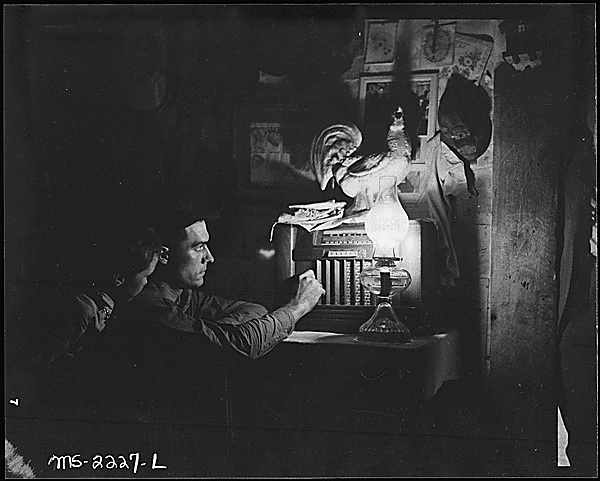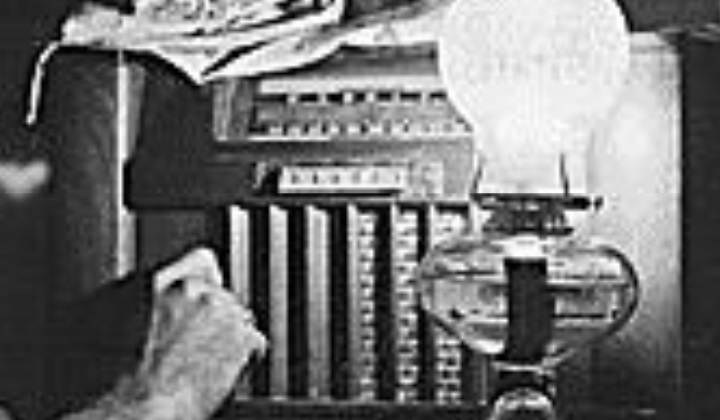 For this Kentucky coal miner in 1946, the radio was his link to the outside world. The photo is from the Department of the Interior, Solid Fuels Administration for War, and is dated September 4, 1946. It has the following caption:
For this Kentucky coal miner in 1946, the radio was his link to the outside world. The photo is from the Department of the Interior, Solid Fuels Administration for War, and is dated September 4, 1946. It has the following caption:
Charlie Lingar and his son listen to their battery radio. He has worked for the company for fourteen years but was injured in a mine explosion last December and hasn’t been able to work since then. His three room house for which he pays $6.75 monthly has no running water, no toilet, no electricity. Kentucky Straight Creek Coal Company, Belva Mine, abandoned after explosion [in] Dec. 1945, Four Mile, Bell County, Kentucky.
Lingar was more than injured in the explosion. He was trapped underground for over fifty hours after the explosion. He and eight other men barricaded themselves in, but left a note in the slate that they were there. The oldest of the men died, but the other eight, including Lingar, survived. According to some accounts, a mysterious lumberjack (or perhaps it was a telephone lineman) appeared out of a door leading to a well-lighted room and assured the men that they would be rescued. The man then returned to the well lit room, and closed the door.
 I’m not able to identify the radio, but maybe some reader can. It’s a battery set, also often called a “farm set.” It seems to have two bands. If that’s the case, then it probably pulled in shortwave signals in addition to the standard broadcast band.
I’m not able to identify the radio, but maybe some reader can. It’s a battery set, also often called a “farm set.” It seems to have two bands. If that’s the case, then it probably pulled in shortwave signals in addition to the standard broadcast band.
The original photo is available at the National Archives, which has this description of the collection:
In 1946 the Department of Interior and the United Mine Workers agreed to a joint survey of medical, health and housing conditions in coal communities to be conducted by Navy personnel. Under the direction of Rear Admiral Joel T. Boone, survey teams went into mining areas to collect data and photographs on the conditions of these regions, later compiled into a published report. The bulk of the photographs were taken by Russell W. Lee, a professional photographer hired by the Department of Interior for this project; others were taken by the Navy. These photographs cover a complete range of activities in mining communities. They show the interior and exterior of both company-owned and priv dispensaries; miners at work performing various tasks; mining grounds, equipment and wash houses; women performing household functions; children at play; recreation facilities, churches, schools, clubs; scenes of mining townspeople in and around company stores and town streets; family portraits; members of the medical survey group inspecting grounds and speaking to mine company administrators, local mine operators and union officials.
